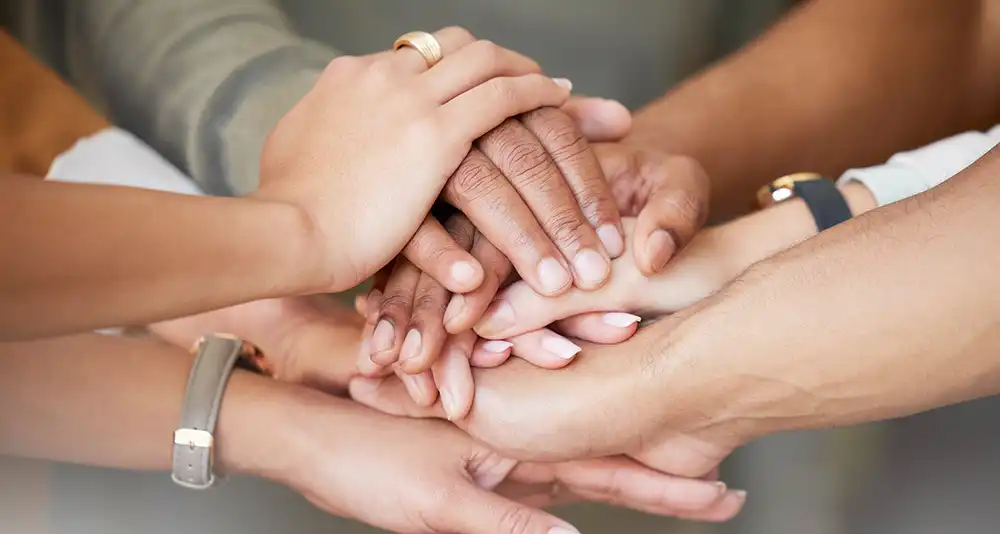Building connections vital for mental health, suicide prevention
Suicide is the second-leading cause of death among teenagers and young adults in the United States. However, suicide doesn’t end with the tragedy itself. The loss of those who die by suicide is felt by many others — families, friends, neighbors, schools and at times, entire communities.
Connectedness, though, can intervene and help a youth before they turn their suicidal ideation into self-harm and death by suicide, as Katrina’s story shows.
Growing up, Katrina witnessed domestic violence and verbal abuse in her home, and the trauma from it led her to suicidal ideation and self-harming. Just days before her 18th birthday, Katrina was removed from her biological home by the state. Alone and with no support, Katrina was referred to Youth Villages LifeSet who could help her.
Three years later, Katrina is thriving with no self-harm attempts and suicidal ideation in the past year. She attends a community college and has future goals of getting an apartment, working at a dog rescue and transferring to a four-year college to continue her studies.
Katrina was fortunate; she was connected to the help she needed. During September’s Suicide Prevention Month, there is a focus on how to get those with mental health needs connected — whether to resources, information, others or a combination of the three.
- Obstacles to mental health resources: Many families in the U.S. live at or under the poverty line. Many more live paycheck-to-paycheck. Income and access to services are factors in determining rates of health and mental health outcomes. Obstacles like having few or no medical facilities nearby, especially in rural areas; lack of transportation; and inability to pay or have insurance coverage for mental health treatment impede access to care. Overcoming these barriers can connect people to healthy living and well-being through a network of support.
- Connected to information about mental health supports: According to a Kaiser Family Foundation/CNN survey, around 30% of Americans say they would not know where to seek help or find mental health services if they or a loved one were experiencing a mental health crisis. This shows a significant portion of the population lacks awareness about access to mental health care. This number can be higher in some states. This can be a major barrier to people getting the treatment they need. Connection to information about mental health support is vital for those who may be experiencing mental health conditions worsened by loneliness.
- Connection to those around you: Connection to others is an important risk-mitigating factor for individuals struggling with suicidal thoughts. Fostering awareness of mental health well-being must include discussing with professionals and others about the impacts of negative mental health to social, psychological and emotional health. Examples of negative mental health conditions that may indicate a problem can include changes in sleep patterns, changes in typical pleasurable activities, changes in energy, or feelings of numbness, hopelessness, disconnection, or that nothing really matters. Additional symptoms to consider are biological processes or other physical ailments that may manifest as aches and pains, or behavioral changes with drinking or drug use. Mood changes manifesting in an increase of arguments, yelling or fighting are important to note. For those who experience these types of symptoms, it is helpful to be aware of warning signs for those at risk for suicidality, such as recurrent thoughts and images that an individual would be better off dead, or thinking about ways to means and methods to die by suicide.
Everyone should know the access points to mental health treatment outside of crisis response services and situations. Suicide is preventable. Every state has services to support mental health needs, but there are gaps. That’s where organizations like Youth Villages meet the mental health needs of children and families where they are, whether in the home, school or community, like its intensive in-home services program, Intercept.
Additionally, connection to mental health support and resources can be reached with a call, text or chat via the 988 National Suicide and Crisis Lifeline or state and local helplines. It is imperative that everyone uses their connections to raise awareness of what mental health and wellness looks like; what the early warning signs of when to seek help are; and how to get connected to the many resources that are available. Connectedness, especially around mental health, involves everyone.
By Michael Stempkovski, Clinical Services Director, Youth Villages

